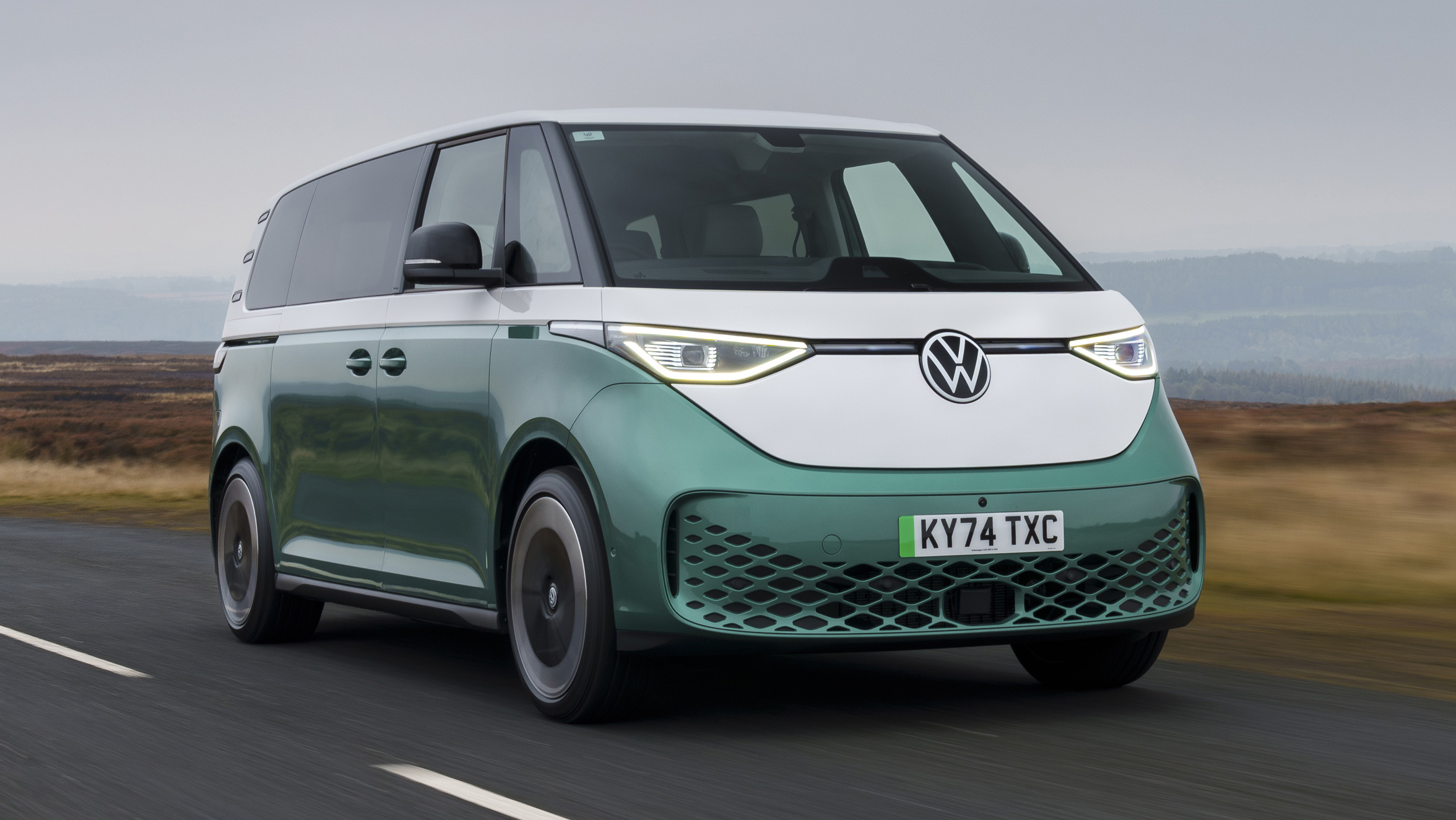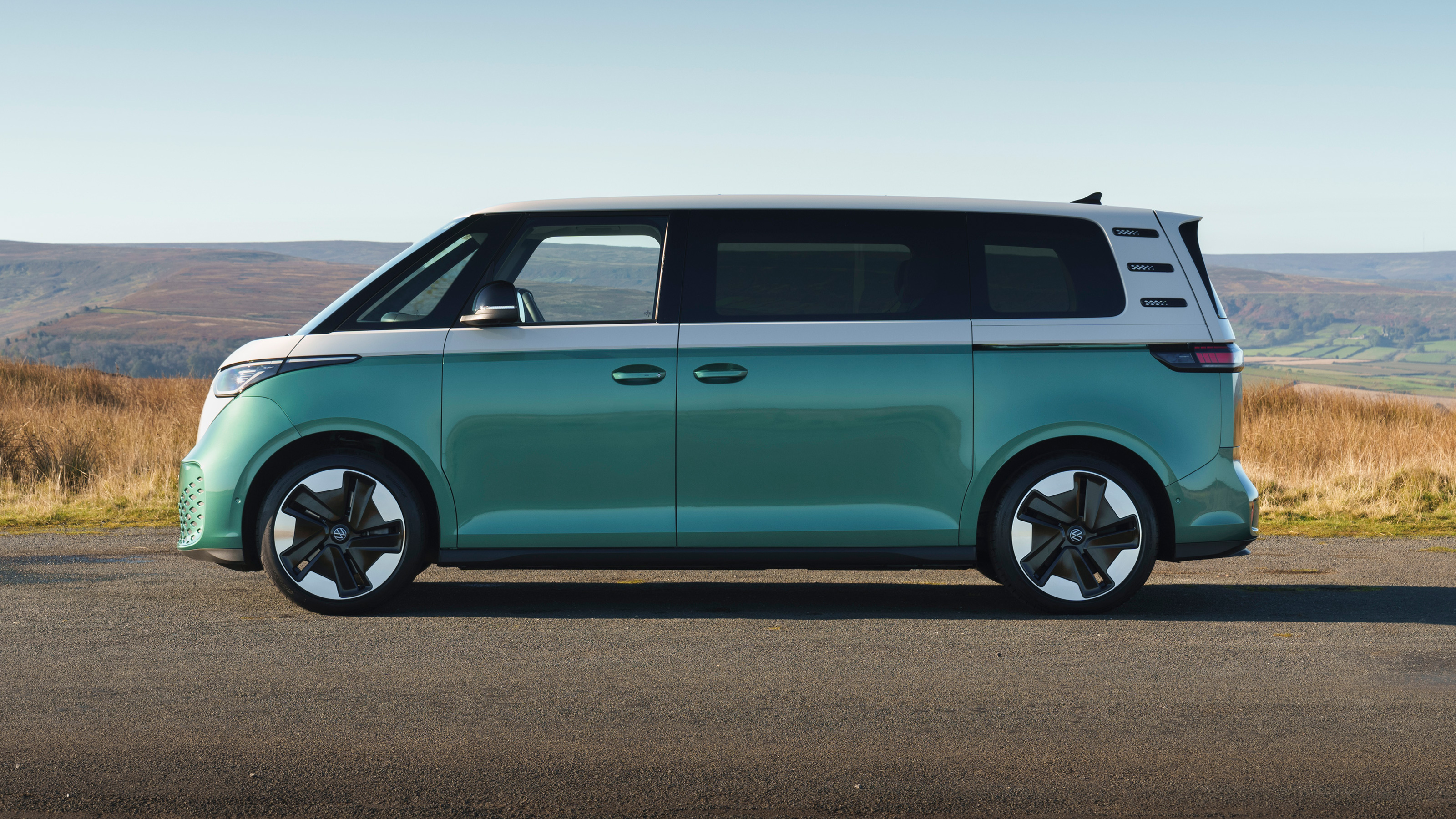Volkswagen ID. Buzz Review



“An uplifting electric van that’s fun to be in and around. Could it break the SUV mould?”
Volkswagen’s ID. Buzz is the retro-inspired electric van that’s aiming to inject some fun into family transport. But does it succeed? Top Gear takes a closer look.
What Is It?
The ID. Buzz is VW’s modern take on the iconic Type 2, designed to offer a funky, forward-thinking option for families. While the initial hype might have hinted at a full camper van, the ‘California’ version is delayed until later in the decade. Currently, three variants are offered: a five-seat ID. Buzz, a commercial Cargo van, and a stretched seven-seat version. According to the review, if you’re considering the Buzz at all, the seven-seater is the one to go for.
MPV in a Bold Outfit
Essentially, the ID. Buzz is an MPV, but its distinct styling immediately sets it apart. It’s designed to make the practical MPV more desirable. Buyers can choose from several optional extras, including a load divider for the boot, and third-party companies have a range of accessories available, including full camper conversions.
Built on the MEB platform, also used by the ID.3, ID.4, and ID.5, the ID. Buzz has a larger wheelbase than the current Caravelle. It features sliding doors on both sides. The powertrain has seen updates, with the RWD five-seat version gaining more power – now rated at 282bhp. This improvement cuts the 0-60mph sprint time significantly, from 10.2 to 7.6 seconds. There’s also an upgraded 79kWh battery for the five-seater, which boosts the WLTP range to a claimed 283 miles, though real-world figures might be closer to 200-230 miles. The long-wheelbase seven-seat version has an 86kWh battery and can achieve 291 miles of range.
A GTX version is also available for those seeking more performance and speed. This model features all-wheel drive with 335bhp. It costs nearly £70k, with a towing capacity of 1,800kg, as compared with 1,000kg for a standard Buzz.
Interior and Driving Experience
Despite having a wheelbase that matches the VW Caravelle, the ID. Buzz has shorter overhangs, making it measurably shorter overall. Despite this, the ID. Buzz is still spacious overall, especially compared to SUVs. However, the three rear seats are deemed rather ordinary.
Up front, the ID. Buzz shines with its captivating design. The driving position is comfortable and the large windscreen and quarterlights give the driver excellent visibility. The cabin in the Cargo version is less inviting, with more plastic and a more utilitarian feel. The infotainment system, despite recent upgrades, is still not a best-in-class experience, though it has improved.
The Buzz is effortless to drive, with a light and easy feel combined with an excellent driving environment. The ride can be a little firm, especially on larger wheels. The turning circle is impressive thanks to the rear-wheel drive.
Pricing and Verdict
Prices for the five-seat passenger car start at around £59,035, the seven-seater from £59,545, the GTX at about £67,435, and the Cargo version at £48,541. The review points out that, while the £59k price tag might seem high for a van, it’s comparable to what people spend on a regular VW Transporter or premium SUVs like the Land Rover Discovery of BMW X5. This means that, despite the high price point, the ID. Buzz offers a unique package. The review praises the seven-seat version, in particular, as it unlocks the full potential of the space and versatility originally promised.
“A convincing vision of a family car done better. We love it because it’s different, because it’s a new anti-SUV template, because it’s fun to be in and around. But equally we’re not blind to its drawbacks.”
Overall, the ID. Buzz represents a compelling alternative to the ubiquitous SUV, offering a refreshing blend of retro design, electric performance, and practicality, although there’s still room for improvement, especially in range and interior design across all models.


